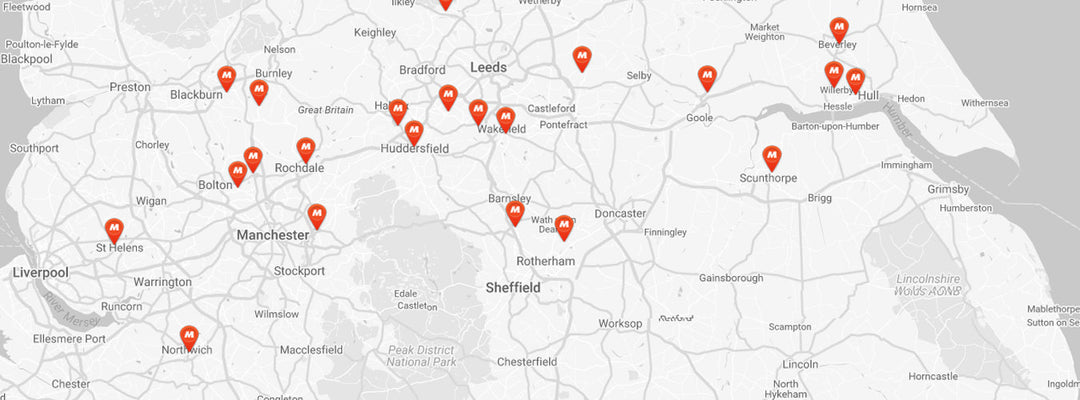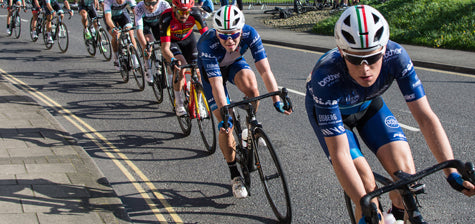Mountain Bike Tyre Guide
Mountain bike tyres explained
Mountain Bike Tyres Mountain bike is a very loose description that would at best now cover several different categories. These categories would be best described as Downhill, Enduro, Cross Country and Singletrack.
The great thing here, is that Maxxis offers tyres for all of these categories.
Below are a few things that you might want to know to help you make the best choice when it comes to buying the right tyre.
Bead
The bead of the tyre is ultimately what ensures your tyre does not come off the rim whilst riding. The bead will clinch into the rim, ensuring the tyre stays on your rim. It does this by sitting in the recess of your rim that the wheel manufacture will have already produced.
At Maxxis we make three tyres of beads for all our clincher tyres. These are
- Wired – A wired bead means that the tyre will be fixed in its size and shape.
- Foldable – A folding bead allows the tyre to fold, thus meaning it can be packaged up smaller than a wired tyre. A folding bead will also be lighter than a wired tyre in overall weight.
TPI
TPI or Threads Per Inch is another way of referring to the carcass of the tyre. The carcass is ultimately what gives the tyre its strength, shape and to a small degree the weight of the tyre. And here is why…
The carcass is what the rubber of the tyre sticks to. With a lower TPI rating, the weave is more open, and thus allows more rubber to stick to the carcass. And so the opposite is true of our highest ONE70 TPI. It has a weave that is very tightly woven, and so less rubber is caught in the carcass. Meaning you get a light weight, high performance tyre that conforms to the changing environments your riding in better.
Compound
The compound or rubber of your Maxxis tyres differs depending on the type of use the tyre is intend for. For example, if your using your bike for leisure or training, then you want a harder wearing compound. But if your racing, you will want performance that is available straight away and be committed to changing your tyre more often, due to the softer nature of the rubber.
Our different compounds consist of…
- Single – The same single compound is used throughout the whole manufacturing process to produce a tyre that stays consistent no matter what of condition you ride in.
- Dual compound – Maxxis produces your tyre with two different types of rubber compound. Meaning that the center tread will made using one type of compound, and the shoulders (edges) of your tyre will have a different compound. This gives you a tyre that rolls fast when going in a straight line, and when you lean into berms or riding through rock gardens the shoulder offers grip and stability.
- 3C or Triple compound – This is Maxxis’ highest level of compound technology, and is reversed for our performance tyres. The tyre now has the three different types of compounds. Built upon a base layer compound, a second layer covering the shoulders and a middle center layer. This gives the tyre even more when grip compared to our dual compound models.
Within our mountain bike 3C compounds, we offer three different types. Maxx Speed, Maxx Terra and Maxx Grip, all offering a different compound build, to provide the ultimate in riding experience. In simple format, Maxx Grip is our softest compound mix, as the softer the compound, the better is conforms to the terrain. Maxx Speed is the hardest of the three compounds, and best suited to racing and riding on hard packed singletrack. Maxx Terra is the best off both, with its offering a hard compound that carries speed well, but soft enough still to deform when the terrain gets tough.
Size
There is generally three different tyre sizes to choose from. These sizes are 26, 27.5 and 29 inches. 27.5” is the most recent size to join the sizing ranks, but is fast become the most popular too. 26” is the most commonly seen, and has been around since the creation of the mountain bike back in the very late 70’s and early 80’s. 29” has been around now for several years, with some bike manufactures choosing to use all three models in their range.
When it comes to the width of your tyre choice. Whilst Maxxis makes every effort to ensure our tyre sizes are accurate, however, these will change depending on the internal rim diameter of your wheel.
It is also worth insuring that when buying your tyres, you make a note whether or not you have a rim designed for wide trail width tyres. These are tyre in width size 2.50, that require a 33mm internal measure or wider on your rim. The wider rim, fitted with the correct type of tyre will give you a more flattened tread pattern, resulting in improved grip, due to a larger contact patch with the ground.
Tyre Pressure
All of our tyres have a recommended minimum and maximum tyre pressure embossed on the side. These recommended minimums and maximum are there for your safety, and we strongly advise that you do not go under or over these pressure. Finding your right tyre pressure can take a little bit of time to get right, but we recommend starting off somewhere near the maximum and letting out 5-10 psi until you feel comfortable.
It is also worth remembering to check your tyre pressures before every ride. As air will escape over time, just like helium balloons do over time.
Types of tyre
Maxxis produces three different types of mountain bike tyres, which although look the same and attach to the rim in the same way. These options are best used in to correct application they were designed for. How do you know the difference?
Clincher tyres – They have a bead that allows the tyre to clinch to the rim of your wheel. These types of tyres require an inner tube to keep the air pressure contained within the tyre.
Tubeless tyres – Tubeless mountain bike tyres are made up of a clincher tyre that has an additional butyl liner moulded into the tyre. And therefore uses a sealant product to retain the air once a foreign object punctures a hole in the tyre, instead of relying on an inner tube. Is can help save weight, and provides a more natural ride. As the friction between the inner tube and tyre has been removed.
UST tyres – UST or Universal Standard Tubeless tyres are in most ways, the same as a tubeless tyre, but with two key differences. Firstly, the bead is more squared shaped, to provide a much tighter, snug fit when used with a UST compatible rim. The changed profile of the bead, give the tyre a tighter fit, and helps remove the issue of ‘burping’. Secondly, the tyre is made with a much more rigid sidewall, which means there is little to no expansion or compression when the tyre is inflated.
Tread Pattern
Maxxis offers you a wide selection of mountain bike tyres, that are specifically designed for often very different types of environments. For example, our Shorty, Wetscream and Swampthing tyres are best designed for being used in wet, muddy and very loose terrain. Where as our Maxxlite range is designed for dry, hard packed racing conditions. We offer guidance on every single one of our tyres as the to terrain it is best suited to.




